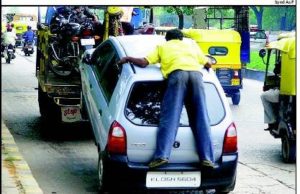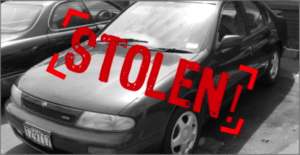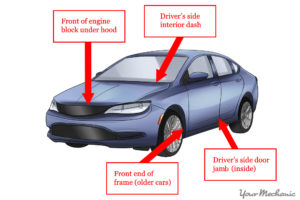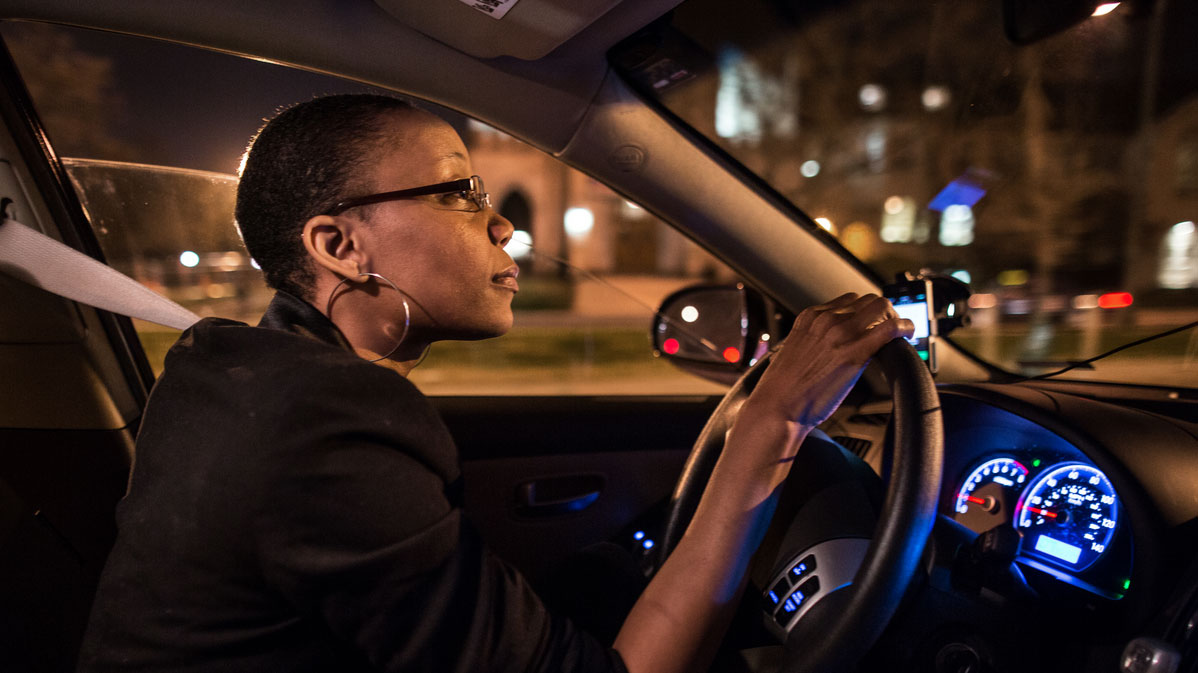Purchasing a Motor Vehicle? What You Need to Know and Do

No one ever forgets how it felt when they bought their first car or when they finally bought their dream car. Unfortunately for a number of us, we were left with a bitter taste in our mouths, after realising that we had been conned by very cunning individuals.
Read on to know what do you need to prevent falling victim to vehicle fraudsters.
Seek a Trusted Mechanic’s Advice
Take a trusted mechanic with experience in that particular vehicle model to view, check and road-test the vehicle to confirm that it is mechanically sound, to help pinpoint any issues such as mechanical faults and to help you in the negotiation process. Tell the mechanic to take a mental note of the condition, the parts and accessories of the vehicle as they are on that day.
Crucial Searches to be Conducted
NTSA Search (TIMS Portal)
Conduct a search on the motor vehicle ownership and registration on NTSA TIMS’s portal here using the prospective vehicle’s Registration Number (what Kenyans call ‘number plate’). This will help determine:
- who the registered owner of the vehicle is; the VIN number (or the chassis number); the engine number; vehicle type (that is, model, type (station wagon, saloon, lorry), colour, engine capacity etc.); and
- whether there are other co-owners of the vehicle such as a bank, a micro-finance institution or other creditor such as a motor vehicle dealer.
Sometimes, there might be another co-owner or owner listed on the logbook such as:
- a bank, a financial institution or a motor dealer, which would mean that there is a loan or a debt secured by the vehicle. Request the owner/seller of the vehicle to discharge the charge on the logbook by getting the bank, financial institution or motor dealer to write to NTSA stating that the loan or debt has been repaid (if it has) and to request the charge to be discharged/removed. The owner will then pay discharge fees, surrender their original logbook with the co-owners’ names; and NTSA will issue a new original logbook with the seller’s names only; or
- a deceased person (legal term for ‘a person who has passed on’). In such a case, you should request the seller to present a copy of confirmed Letters of Administration or Grant of Probate issued by the courts to the NTSA office together with the original logbook, NTSA will then advise on the next steps and ultimately facilitate the transfer of the vehicle to the administrator/executor of the deceased’s estate who has been confirmed by the court and who in turn will transfer the vehicle to you or NTSA will transfer the vehicle directly to you and issue you with a new original logbook in your names.
IMPORTANT: Do not attempt to purchase a vehicle with a logbook showing another owner such as bank, financial institution, a motor dealer or a deceased person! It can be repossessed by the bank, financial institution or a motor dealer or the transfer challenged in court by dependant of the deceased person such as one of their children or spouse! You might end up like the gentleman below!

Collateral Registry Search (eCitizen Portal)
Conduct a search on the Collateral Registry (MPSR) under the Business Registration Service (a department of the Attorney General’s Office) on your account on the eCitizen Portal, by clicking on “Search Request” and select “Search Criteria” then “Grantor’s Identification” where you insert the owner’s/seller’s name and national ID/Passport number or “Motor Vehicle Chassis Number” where you insert the VIN Number of the vehicle. The Collateral Registry lists movable assets including motor vehicles which have been used as security to secure loans granted by individuals, banks, financial institutions such as microfinance institutions, saccos, credit institutions and motor dealers.
KEBS Search
Conduct a search on Kenya Bureau of Standards’ (“KEBS”) mileage verification portal here using the prospective vehicle’s Chassis Number (VIN Number) to determine whether there has been odometer tampering to reduce actual vehicle mileage. You can also send a text message to 20023 as follows:- CH#Chassis Number. Get the Chassis Number from the NTSA Search document you had already obtained.
KRA Customs Duty Search
Check online for a public notice published in the local dailies on Sunday, May 15, 2016 by Kenya Revenue Authority (“KRA”) and on KRA website for a public notice, which required owners of 124 vehicles (registration numbers listed) to present the vehicles and their importation documents to KRA for verification of payment of import duty; to confirm that the prospective vehicle’s registration number is not among the 124 registration numbers listed therein.
If possible, ask the seller whether they have all (or any) of these documents, QISJ (issued by KEBS), Import Declaration Form (“IDF”), F147 and Payment Slip, Export Certificate, Duty Entry Form and Payment Slip, CFS invoice, Receipt and Release order, and Bill of Lading; especially if they are the vehicle’s first owner or if the seller is a motor vehicle dealership.

Confirm whether the engine has ever been replaced by the seller, and if so, inquire whether there are importation documents such as IDF Forms for the engine, if it was imported; or sale receipts, if the engine was bought locally.
Before Meeting the Buyer
Obtain from a lawyer a Motor Vehicle Sale Agreement or search for a suitable one, online or from a legal portal such as LexisNexis, amend it and then print it.
Open an account with the NTSA TIMS portal and confirm that the owner too has an account on the NTSA TIMS portal. Get the owner’s bank details.
Carry the Motor Vehicle Sale Agreement,NTSA TIMS Vehicle Search and a Bankers Cheque drawn in favour of the owner with the agreed purchase amount.
IMPORTANT: Avoid transacting in cash when meeting the owner/seller. Always use Bankers’ Cheques! They are as good as cash but have the safety precaution of being traceable, easy and safe to carry and have to be banked. In the event that the seller insists on cash (we advise against this!), request them meet you at the banking hall of your bank and release the funds to them in the hall, not outside, and only AFTER concluding the transfer and being given the original logbook!

Before the meeting, ask the owner to come with the vehicle (if it is roadworthy) to the meeting place, if it is not, arrange for a flat-bed recovery truck to go to the premises where the vehicle is and load it up, that is, BEFORE parting with your Bankers’ Cheque. Remember the film “Now You See Me” or the “Pata Potea” street cons of downtown Nairobi? You can get conned in a blink of an eye. Being a little paranoid, always helps!
IMPORTANT: Avoid paying a seller and then collecting the vehicle later on, even if the seller is a friend. The vehicle might get involved in an accident, be stolen or damaged between the time of payment and collection. Pay only when you can see the vehicle and the keys!
Also before the meeting, ask the owner to carry their original as well as copies of their National ID or Passport and PIN Certificate. Request for the original logbook to be brought to the meeting. Do not forget to ask the owner to carry the QISJ, IDF, F147 and Payment Slip, Export Certificate, Duty Entry Form and Payment Slip, CFS invoice, Receipt and Release order, and Bill of Lading (if these apply, and are available); and where the engine has been replaced, to carry the IDF for imported engines, or sale receipts for locally purchased engines.
On the Transaction Day
IMPORTANT: Hold the meeting in a public place such as a law firm, shopping mall, restaurant, NTSA’s offices, a bank etc., where there are members of public and/or security officers about, as well as internet.
Have your trusted mechanic accompany you to the meeting as well as a trusted friend or relative for security purposes. The mechanic will do a final check on the vehicle to confirm that the vehicle is in the same condition it was when you and him/her checked and road-tested it (vehicle battery, radio, spare wheel, jack, wheel wrench and other parts and accessories are still there and that there is no new dents, cracks or scratches etc.).
Lastly, ensure you have money in your MPESA account for the payment of the motor vehicle transfer charges which vary based on the vehicle type such as saloon, lorry etc. and engine capacity (“cc.”). KES. 6,000.00 is the maximum amount one may be required to pay at present and minimum around KES. 1,000.00.
Ensure that you have access to internet for the purposes of accessing NTSA TIMS portal transferring the vehicle from the owner’s NTSA TIMS account to your NTSA TIMS account.
Confirm and double check that:
- the engine number (called Vehicle Identification Number “VIN”) on the vehicle matches the one on the NTSA TIMS Search and the original logbook; if it does not, then the vehicle is either stolen, or duty was not paid and has been given the registration of another scrapped or written off vehicle;

- the original logbook is authentic and not a forgery;
- the names on the owner’s original logbook match the names on the NTSA TIMS portal;
- the ID Number or Passport Number and PIN Number on the owner’s TIMS account match those on their original National ID or Passport and PIN Certificate; and
- there is no other listed owner on the logbook or the TIMS portal such as a bank, financial institution or a motor dealer etc. and if there is, abort the transaction until the other owner consents to the sale and agrees to transfer the vehicle together with the owner to you.
Both parties, that is, the seller and the buyer will then fill in the relevant details on their respective TIMS accounts where the seller transfers and the buyer accepts the transfer (as set out in this link).
The seller will then sign the Motor Vehicle Sale Agreement, handover the original logbook, motor vehicle keys and the buyer will hand over the Bankers Cheque. Also ask for an invoice and/or a receipt (if available).
Take your vehicle, legal documentation and go.

After the Purchase
If the engine had been changed, arrange with the seller to accompany you to the Nairobi Traffic Headquarters along Ngong Road, next to Kenyatta Hospital or the nearest traffic base or police station for the police to sign the replaced engine IDF document or purchase receipt.
Depending on the vehicl type, you can book online on the NTSA TIMS portal for the vehicle’s inspection by NTSA Motor Vehicle Inspection Unit at Industrial Area, Nairobi or the nearest regional Inspection Unit.
Follow up with NTSA two weeks after the transfer, to collect your new logbook in your name. Note to carry your original ID or Passport and the original logbook in the previous owner’s/seller’s name.
Lastly, never ever pay any “Commitment Fee” or any amount “to enable a seller to bring the car to you for viewing or for fuel” or any “Advance Payment”. KES 5,000 or KES. 50,000 is not a small amount! Neither is KES 600,000 or KES 1,000,000. Be smart and take your time and due diligence. Above all, follow our advice here to the letter. Be a little paranoid!☺









Comments (24)
Thanks for the vital information, I did a search on a car and got a list of ownership from NTSA ,that’s previous owners were two(credit firm and a motor dealer AND THE CURRENT OWNERS ALSO ARE TWO (a bank and an individual)
Can one car be owned by two persons ?
You kind words are greatly appreciated Godfrey. Indeed a vehicle can be owned by more than one person. In the present case, where one of the owners is a bank or a credit firm or a motor dealer, as well as an individual, it means that the vehicle has been used as security (collateral) by the bank or credit firm for a loan granted to the individual listed on the logbook. Once the loan is cleared by the individual, the bank or credit firm will discharge the vehicle by informing NTSA through TIMS to transfer the vehicle to the sole name of the individual and NTSA will then issue a new logbook showing only then names of the individual.
Where there is a motor vehicle dealer listed as one of the owners of a vehicle, it means that the individual listed on the logbook bought the vehicle on an instalment payment plan or hire purchase terms from the dealer and the individual has not yet paid the dealer in full for the vehicle. Having the vehicle dealer’s name on the logbook serves to let every potential buyer to know that the vehicle has not been paid for in full and to prevent the individual from selling it without the dealer’s consent or knowledge.
It is critical for any buyer to enquire from the individual selling such a vehicle whether the dealer had been paid in full or the bank or credit firm has been repaid its loan in full, and requesting the owner (the individual) to discharge the vehicle before parting with your money. When a vehicle is discharged, NTSA will issue a new logbook in the sole names of the individual. Once this happens, you can then pay the seller the purchase price. You can even visit the bank or credit firm or vehicle dealer yourself to confirm if the loan or purchase price was paid in full by the seller.
It is our experience that once a seller has received money in full for the vehicle from a buyer, they are not motivated to have the logbook discharged and will take the buyer round in circles. Avoid paying for a vehicle whose logbook has two or more current owners until it has been discharged. Also avoid paying for a vehicle that is in the name of a deceased person (someone who has passed away). Only pay after these issues have been settled.
Thats great information, thank you for that. But the information I was looking for pertaining vehicle transfers is not here. The case of a lost logbook and the process of getting on replaced. Also can you please cover on the process of Letter of update. I dont know what that is and I was told to look for it on my TIMS account and I didn’t find anything. Now am stranded and confused. I tried calling the NTSA help line but no response. I just want to know how to do this ‘Letter of Update’ and where can I find it on my TIMS account. Thank you.
You are welcome James! The information we shared in our article was only meant help purchasers of motor vehicles navigate the highly risky business of purchasing and selling motor vehicles. We do not have the detailed and technical information that you need. You can find the information you need concerning replacing a lost logbook and the “Letter of Update” by visiting the NTSA offices whether at Upper Hill, Nairobi or other regional offices and speaking directly with the officers there. They will answer all your questions and guide you accordingly. You need not feel stranded and helpless. But kindly note that you will need a Police Abstract for the process of replacing the lost logbook from the police station nearest to you.
To add on this issue of lost logbook. You will need a police abstract and an affidavit from a lawyers office. This together with other docs(mostly issued by the DCI)must be presented to the DCI offices to Countercheck that you own the subject motor vehicle.
Your information was very helpful, certainly more people need to see this. Just one more question, I am currently searching for a motor dealer that will offer me with a hire purchase (HP) deal. While I have seen numerous dealers giving this offer, none of them is willing to have the logbook co-owned. Instead, the ones I have talked to insist on holding on to the log-book until I finish the payments. Frankly I feel uneasy as I can imagine how easy it is for transactions to be made with the logbook without my assent. So do you think it would be wise getting into a HP deal without co-owning the log-book? what are the chances of getting screwed if I do. Thanks
Your kind words are much appreciated. We would not advise you to enter into a HP deal where you do not co-own the vehicle. As rightly pointed out by you having the logbook jointly registered in both your name and the dealer is best practice. Where there is joint registration, the dealer cannot do anything without your knowledge and participation including transferring the vehicle to another person, unless you have defaulted paying the agreed instalments. Both the dealer and the purchaser are protected in joint registration cases rather than the dealer only.
The standard practice is for the dealer to transfer the logbook to your joint names after you have signed the HP agreement and then retain the original logbook with the joint names while you keep a copy. We caution against entering into a vehicle purchase deal where the logbook is not jointly registered in your name and the dealer. You are better off shopping around until you find a dealer who agree to joint registration.
Thank you so much for this info. You are a gem!! Especially being a little paranoid and co-owning a logbook. I am looking to purchase from a dealer who can agree joint registration. Thank you again!!
Thanks for your advise.I did a search and confirmed that the the log book has two names:KP&LC and the deceased name who worked with KP&LC. The spouse wants to sell the car. I have developed interest with it. What is your advice?
That the logbook has two names (KPLC and a Deceased Person’s name) means that the vehicle was used as collateral (security) for a loan by the Deceased from KPLC. Find out from both the spouse and KPLC if the Deceased had finished paying the loan or not, because, if he had not, then there is the risk that KPLC can repossess it and sell it to recover the loan amount. One cannot purchase an asset that is registered as collateral by a creditor. If he had finished paying the loan, then KPLC should discharge the vehicle and be removed from the logbook, whereby a new logbook issued by NTSA in the name of the Deceased only.
The other critical issue is whether the spouse has obtained Grant of Probate or Grant of Letters of Administration and whether these have been confirmed by the courts. NTSA will require a copy of either of these two documents to be submitted in order to transfer the logbook from the Deceased’s name to her and then she transfers the same to you. This is unless the spouse has the Deceased’s NTSA’s TIMS login details to allow her to log in and transfer the logbook from the Deceased to your name. There is a grave risk in this latter approach since she will be deemed to be “intermeddling” (an offence) with a deceased person’s property without the court-issued Grant of Probate or Grant of Letters of Administration.
what if new log book has been processed and i am required to surrender the old one but o have misplaced,what am i suppossed to do to be given the new one
I’m grateful for this very detailed advice, especially concerning ownership verification & all. Thanks a lot!!!
We appreciate your kind words!
This is very helpful information.I have learnt a lot that has helped me take a lot af caution just when I was about to seal a deal.
I
Hi,
Thanks so much for the article.
Can you buy a car without a logbook? the seller of the car says he is waiting for the logbook to be processed after importing the car.
Peter
Hi Peter,
In such a situation, you can purchase a vehicle without the logbook, but we will advise you not to do that if the seller is not well known to you as a reputable person or company (the headache and costs you will incur in ensuring that you eventually get the logbook if the seller decides not to co-operate or tries to swindle you, even if you eventually win, in not worth it). Also, you must have done your due diligence such as conducting a search on TIMS.
Reasons, why you can proceed to purchase the vehicle, are as follows:
(a) once a vehicle is sold, the law provides that the registered owner must complete the transfer and hand over the logbook to the new owner who will then hand over the logbook to NTSA within 7 days. The burden is on the registered owner to ensure that they complete the transfer and that the logbook is handed over to NTSA within 7 days of the sale so that NTSA can effect registration of the vehicle in the new owner’s names and the issuance of the logbook to the new owner – meaning that the seller must complete the transfer and handover the logbook to the buyer within 7 days after the purchase;
(b) lastly, the law (section 9(2) of the Traffic Act) states that if the registered owner (seller) fails to complete the transfer, NTSA (on being requested by the buyer) will register the name of the new owner after being satisfied that the seller refused to comply with the requirement in paragraph (a) above, or has died, left Kenya or cannot be traced.
From the above, you can proceed to request NTSA to complete the registration of the vehicle in your name and issue you with its logbook with your names.
What is critical – you must have concrete proof and evidence that you purchased the vehicle and paid the seller. Therefore you must ensure that you have a signed Vehicle Purchase Agreement signed by the seller who must have been the registered owner of the vehicle, proof of payment (cash won’t help but a bank transfer receipt or copy of the cheque will), witnesses who witnessed the sale, NTSA search result that you had obtained showing the seller was the one registered as the owner of the vehicle, the seller must have initiated the transfer process on their TIMs account and you have screenshots etc.
These will greatly help you to prove to NTSA that you bought the vehicle when you request them to issue you with the logbook.
Hope the above helps.
How do you treat a vehicle logbook that has errors in the make and model…..
Where a vehicle’s logbook has particulars that do not correspond to the actual details of the vehicle, for instance, the chassis number on the logbook is different to the one on the vehicle’s firewall or chassis (or make or model etc.), then you have to visit the regional Directorate of Criminal Investigations (“DCI”) office nearest to you. If you are in Nairobi, visit the Provisional Police Headquarters at Jakaya Kikwete Road, next to Integrity Centre.
The DCI officers will carry out “tape-lifting” of the vehicle’s chassis number from the vehicle and then check their records on the vehicle to see if there are any inconsistencies in the details on the vehicle, on the logbook and in their records. They will also check if the vehicle has been reported before for any issues etc. If the chassis number and the engine number from the vehicle corresponds with those in their records they will fill in a particular form with their report.
You take that tape-lifting report, plus a copy of your National ID or Passport, PIN Certificate, Affidavit from a commissioner of oaths, a letter requesting NTSA to change the erroneous particulars and original logbook to NTSA.
I contributed half of the money when we were buying a car with my husband, since am always busy at my job he was the one who went to buy the car, when he came i asked him whether he filled my documents as next of kin but he told me there’s no place to fill for the next of kin, instead there’s a part of where you fill mothers name and attach her ID, kindly clarify if it’s true because i feel fooled somehow, thanks
Hi! Your gut feeling is right that you have been duped. If you contributed half of the money that was used to purchase the vehicle, you have a legal right to be included in the vehicle’s logbook as a joint owner of the vehicle. The laws allow such joint ownership and NTSA has the power to register 2 or more people on a vehicle’s logbook. Please insist on being registered as a joint owner on the vehicle’s logbook to secure your contribution because as things stand now if anything happens to him, his mother might claim ownership of the vehicle.
Thanks for the invaluable information. How do you confirm ownership of an unregistered vehicle before purchase? Will QISJ, IDF, F147 and Payment Slip, Export Certificate, Duty Entry Form and Payment Slip, CFS invoice, Receipt and Release order, and Bill of Lading be sufficient documents?
Thanks,
Phil
Our advice: wait for the vehicle to be registered and logbook before you purchase it. Only the logbook will prove your ownership after purchase. The rest are not recognised under law as legal ownership documentation.
What about purchasing imported car from a dealership through hire purchase where the car has not been registered in Kenya ?
How long does joint registration take ?
Our advice: do not purchase a vehicle that is yet to be registered. Proving your ownership will be quite difficult. Wait for it to be registered, for the registration number to be issued and the logbook as well. Then you can purchase and have the vehicle registered in the joint names of the dealer and yourself. This way your interest in the vehicle is better secured and you minimise chances of chasing the dealer to complete the transaction. The other way is fraught with risk. Registration takes about 2-3 weeks but can be longer or sooner.